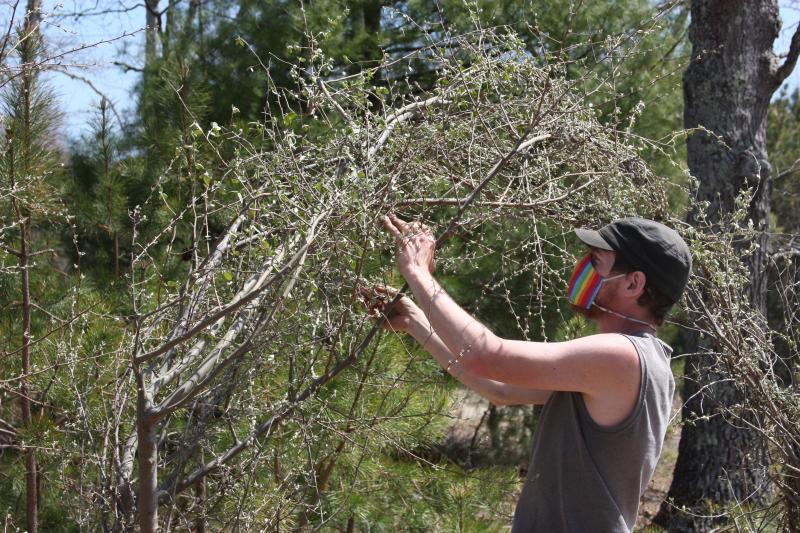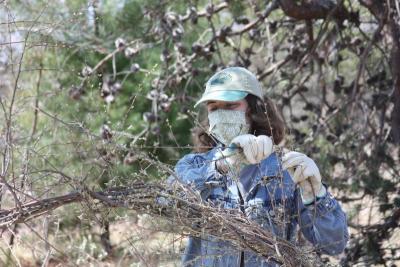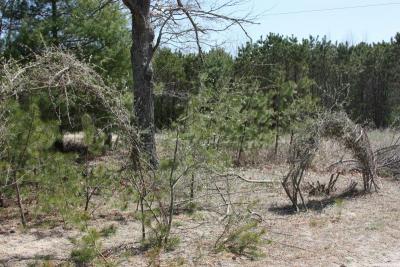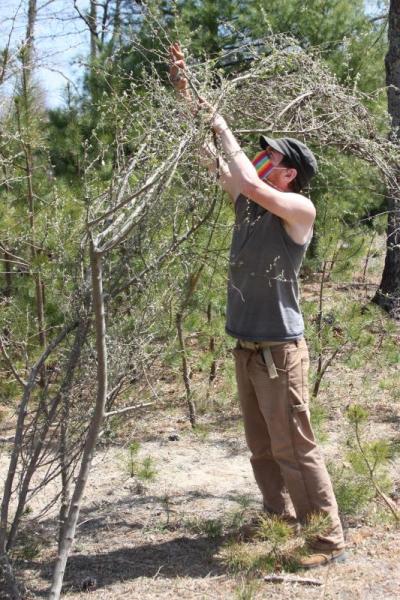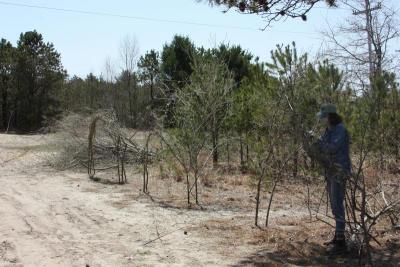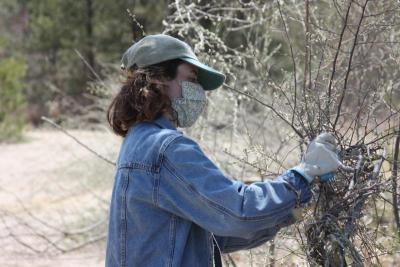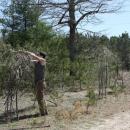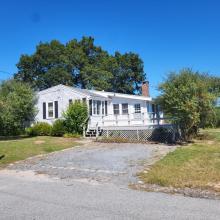Invasive plants turned sculptures: new art installation at Marks Cove
Wareham residents who visit the Marks Cove Conservation Area in the coming weeks will be greeted by two sea serpents, which appear to emerge from the ground along the walking path.
But as seamlessly as the sculpture blends into the landscape, creating the large art installation — made up of invasive plant species — required hours of work.
Volunteers and a Wareham Land Trust staff member worked from 10 a.m. to 4 p.m. to bring the two serpents to life on Saturday, April 24. While the serpents might not be totally complete yet, they’re well on their way to being finished.
Justin Cifello, a Wareham Land Trust volunteer and farmer at Bay End Farms, is a local artist who has created sculptures out of invasive species in the past. He was on hand Saturday to provide the artistic direction for the invasive plant build project.
“Justin is a very gracious volunteer who offered to put on this invasive removal and art build program,” explained Jenna Shea, a TerraCorps member with the Wareham Land Trust and Mass Audubon.
Shea was working the event alongside Cifello and said that although there hadn’t been a large number of volunteers, there had been a good group of people who helped with the sculpture.
Cifello said that on Thursday, April 22, volunteers came through and pulled and cut up invasive species growing in the area.
“If there’s disturbed area, nature wants to heal that,” he explained. “Typically that would be done by aggressive native species, but we’ve brought so many seeds to this continent that are invasive — and what makes them invasive is that the local animals and diseases don’t yet know how to eat or control these plants, so they grow out of control.”
At the area around Marks Cove, located at 37 Nicholas Dr., Cifello said the primary invasive species are Autumn Olive and Russian Olive, which are large shrubs that can turn into small trees.
“So on Thursday we had a group of volunteers come and cut [the invasive plants], and now we’re shaping them into two sea serpents — weed serpents?” he said with a laugh.
The invasive plant build was part of the Wareham Land Trust’s Wild for Wareham events lineup. Shea explained that the events were hosted in cooperation with Mass Audubon, the Onset Bay Center and clubs like Wareham’s Garden Club.
The invasive plant build was the final event.
“This is sort of a culmination of that great collaboration we’ve had,” Shea said.
Cifello and Shea weren’t sure how long the Wareham Land Trust plans to keep the sculptures up, but Cifello said the structures can last for several years.
Henry Pavao volunteered on Saturday and said that he hadn’t realized the volunteers would be helping build the sculptures too.
“It’s really cool,” Pavao said. “It’s a very interesting art form. It’s different from anything else I’ve ever done.”
Cifello said he’d heard the same sentiment from other volunteers, and compared it to “wreath making at a large, industrial scale.”
Invasive removal can be challenging, Cifello explained, because the plants take up a lot of space and once they’re cleared they have to go somewhere.
“Typically, people would burn them or bring them to a town dump pile, but that’s labor-intensive and carbon-intensive,” he said. “And any time you move them, there’s a chance of spreading seeds.”
By turning the plants into sculptures and allowing them to decompose where they were cleared from, the volunteers reduced the chances of accidentally spreading invasive species to other locations.
Cifello said someone would also come by the sculptures and the cleared area to apply herbicides that will ensure the invasive plants don’t come back.
“The goal is really not to eradicate invasive species — because they’re here to stay,” he explained. “It’s more to mitigate them so that the native species can get a time window so they can jump up and not get smothered.”
Ultimately, Cifello said he hoped the invasive plant sculptures would inspire people to think creatively when it comes to environmental problems.
“The project was obviously to help clear up the land and to leave an art piece, but also just to show people that there are creative, out-of-the-box solutions to all these problems we’ve created for ourselves,” he said.



